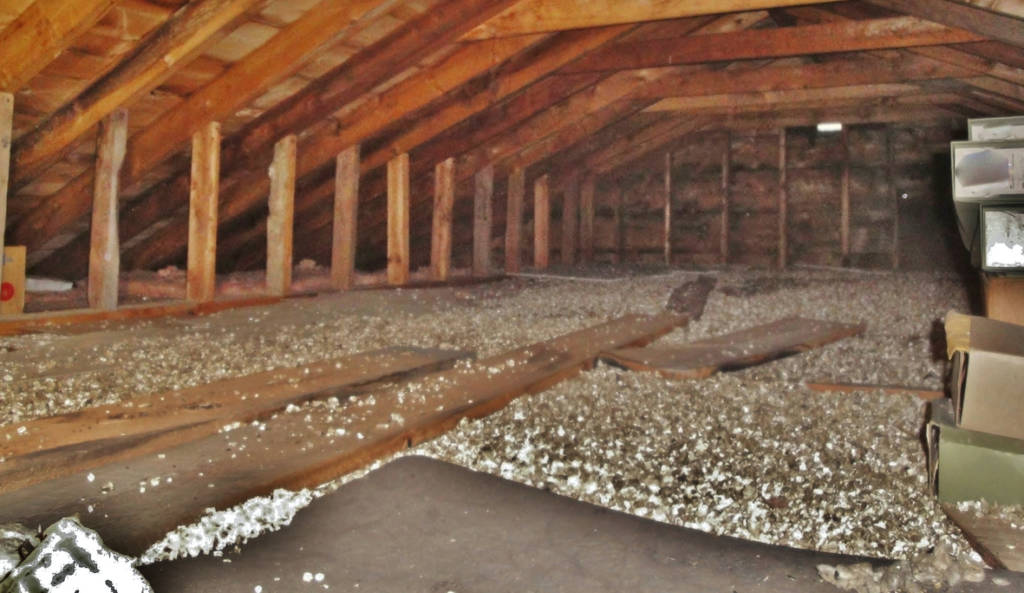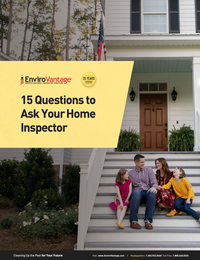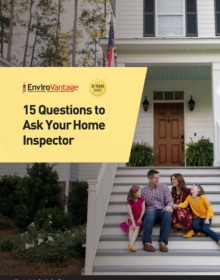10 Things You Need to Know About Vermiculite Insulation

Vermiculite is a mineral that contains properties that make it a viable ingredient in insulation and other building materials. It’s also commonly used in potting soil since it holds water, making it easier for plants to grow. While vermiculite itself isn’t dangerous, most vermiculite insulation contains asbestos, which is dangerous and causes health problems when inhaled.
10 things to Know About Vermiculite Insulation
1. What Is It and How Is It Used?
Vermiculite insulation was a popular construction material among contractors and builders in the past because it is so lightweight and heat resistant. Between 1919 and 1990, over 70% of vermiculite sold in the United States was extracted from a mine in Libby, Montana. Unfortunately, there was also a deposit of asbestos in the mine, which means that the vermiculite also contains asbestos.
Most of the vermiculite extracted from this particular mine was used in insulation and was often sold under the Zonolite brand. If you have vermiculite insulation in your house, Zonolite brand or other, you can assume that it may contain asbestos. The Libby mine was closed in 1990, but many houses still have vermiculite insulation. Since asbestos in vermiculite is friable, which means that it’s not contained, it’s important for it to be handled with caution.
2. Is It Dangerous or Safe?
Since such a large amount of vermiculite used in insulation was from the Libby mine, it’s best to assume that vermiculite insulation contains asbestos and is dangerous. Asbestos is a toxic mineral that was once widely used in a variety of building products. It’s now known to be a health hazard and can cause serious health problems such as lung cancer, mesothelioma, and asbestosis.
The vermiculite used in potting soils is considered safe since there is little possibility that it came from the Libby mine. Vermiculite in soil is in such small concentrations that negative health effects are rarely seen. For those with concerns, it may be best to buy soil without vermiculite.
3. What Does Vermiculite Look Like?
Vermiculite can be flakey or look like small or large pebbles, about the size of an almond. It’s typically, either brown, gray, silver, or gold in color.
4. Where Does It Come from?
As stated earlier, most vermiculate used for insulation in the United States is from a mine in Libby, Montana. Vermiculate is also mined in Virginia, South Carolina; South Africa; and China. Vermiculite from these places does not usually contain asbestos.
5. Where Is It Most Often Found?
Vermiculate insulation is normally found in attics of houses built before 1990. Homes with vermiculite insulation and balloon frame construction may have vermiculite in the wall cavities. It’s also found in potting soils.
6. Vermiculite Attic Insulation
Most attic vermiculite is Zonolite, and all Zonolite insulation comes from the Libby mine. That being said, not all vermiculite insulation is Zonolite brand, but all Zonolite product has small but hazardous amounts of asbestos. W.R. Grace, which operated the Zonolite company from 1963–1990, established a Zonolite Attic Insulation Trust to disperse funds to eligible claimants for partial reimbursement of the cost to remove or contain Zonolite Attic Insulation in their homes. Those getting vermiculite insulation removed from their attics may apply to the trust for reimbursement.
7. What Are the Health Risks?
Inhaling vermiculite containing asbestos can lead to serious health issues such as mesothelioma, lung cancer, asbestosis, and pleural plaques. Mesothelioma is a non-curable tumor that forms in the lungs, abdomen, or heart due to asbestos exposure. Family members or individuals diagnosed with mesothelioma may be eligible for compensation. When several asbestos manufacturers filed for bankruptcy, they created asbestos trust funds that compensate individuals with mesothelioma and other asbestos-related diseases.
8. What To Do If It’s in Your Home
If there is vermiculite or Zonolite insulation in your home, don’t try to remove it yourself. You should hire a professional to safely remove it and stay out of the area before having it removed if possible. If you suspect there may be vermiculite in your walls, it’s recommended not to open the walls, which will risk releasing any potential contaminants into the air. If you are planning construction and suspect vermiculite in your walls, contact a professional who can safely test the material.
9. How To Test for It
You should assume that vermiculite contains asbestos. We recommend hiring a professional to send a sample to the Zonolite Attic Insulation Trust to determine if it came Libby, MT and three samples to a qualified lab to determine the percentage of asbestos within the samples. This can be useful in determining the waste stream and regulatory requirements for removal.
10. Removal Process
The vermiculite removal process involves using a high-powered vacuum to transfer the vermiculite into an enclosed dumpster. The vermiculite is moistened during the transfer and sealed so the asbestos in the vermiculite won’t become airborne. There is then a final clean to make sure there is no vermiculite dust.
EnviroVantage has a quick and efficient removal process. Our trained, expert technicians leverage leading-edge equipment and technology while adhering to industry best practices to deliver safe, high-quality services to our clients on job sites every day.
If you have questions about vermiculite removal or would like to speak with one of our specialists, please contact us today.

Are you ready to buy or sell your home?
Whether your offer has just been received or you’re thinking about putting your house up for sale, consider these 15 important questions to ask your home inspector.

Questions?
We’d be happy to answer them — and talk about how EnviroVantage can support your next abatement, demolition, or remediation project.